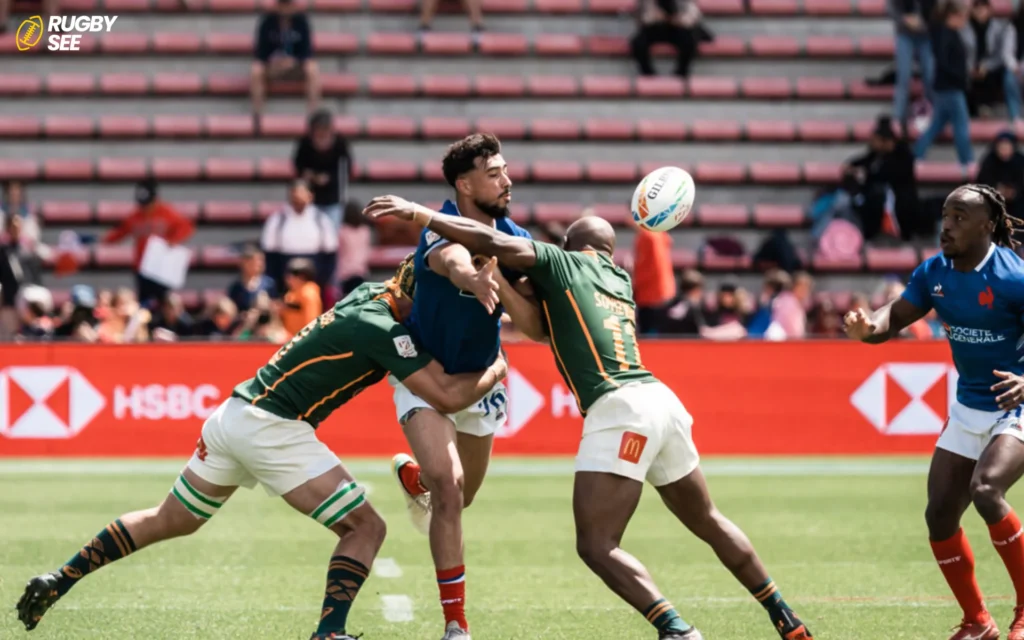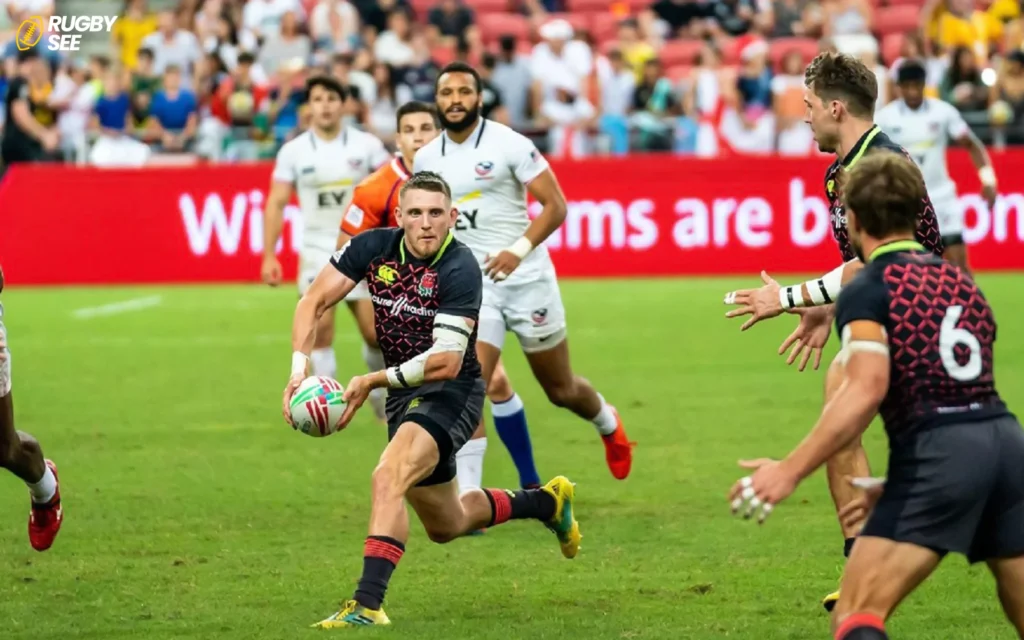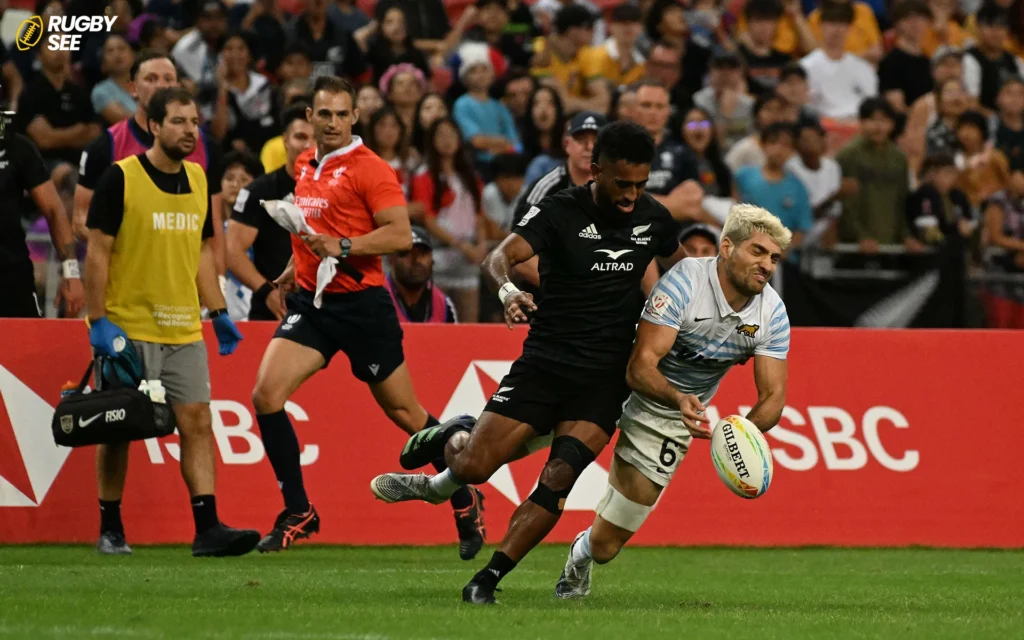Rugby, a sport known for its intense physicality and dynamic gameplay, raises concerns for players with vision impairments. One common question that surfaces is: Can rugby players wear glasses? This article delves into the regulations, risks, and alternatives available for rugby players who require corrective vision while playing.
Understanding the Risks and Regulations
Rugby, governed by the World Rugby Laws, places a high priority on player safety. According to the official regulations, players are prohibited from wearing any type of ordinary glasses on the field. The main reason behind this prohibition is the high risk of injury—not just to the player wearing glasses but also to others on the field. Glasses can easily break during contact, leading to cuts or severe eye injuries.
However, this does not mean that players with vision problems are left without options. The rules do allow for the use of protective sports goggles under certain conditions. These goggles are designed to be safe for both the wearer and other players and if you want to know about Rugby Sport in America read Do Americans play rugby?
The Approval of Protective Sports Goggles
In recent years, World Rugby authorized the use of specific protective goggles. These goggles must meet rigorous safety standards to ensure they are safe for high-impact sports like rugby. The approved goggles are made with a polycarbonate frame and offer a wrap-around design to minimize the risk of them being dislodged during play. They are also fitted with prescription lenses, tailored to the individual needs of the player.
The introduction of approved protective goggles has been a significant development for visually impaired players. It not only allows them to participate in the game safely but also ensures that their performance is not hindered by poor vision.

The Benefits of Using Protective Goggles
- Safety: First and foremost, the primary benefit of using protective goggles is safety. These goggles are designed to withstand impacts and protect the eyes from injuries that can occur from fingers, elbows, or even the ball itself.
- Vision Correction: For players who require vision correction, these goggles provide an effective solution, ensuring clear vision throughout the game. This is crucial in a sport where spatial awareness and the ability to see the ball and other players clearly can make a significant difference in performance.
- Comfort and Stability: High-quality sports goggles are designed for comfort and stability. They are made to fit snugly around the head, ensuring they stay in place even during rigorous activity.
Challenges and Considerations
While the option to use protective goggles addresses the needs of players with vision impairments, there are still challenges to consider:
- Adaptation: Some players may find it challenging to adapt to wearing goggles, especially if they are used to playing without any vision correction. It can take some time to adjust to the new visual dimensions and the feel of the goggles.
- Maintenance: Keeping the goggles clean and in good condition is essential. They can become fogged up during play, which can impair vision. Players must ensure they have appropriate anti-fog solutions and keep the lenses clean.
- Regulation Compliance: It’s crucial for players and coaches to ensure that any goggles worn are compliant with the regulations set by World Rugby. Using non-approved protective gear can lead to penalties or disqualification from play.
How to Get Approved Rugby Goggles
Players interested in obtaining rugby-approved goggles should consult with their optometrist or a sports eyewear specialist. These professionals can guide the fitting process and help players choose goggles that meet both their vision needs and the safety standards required by World Rugby.
Future Perspectives on Protective Gear in Rugby
The ongoing evolution of safety gear in sports opens up a broad field of possibilities for rugby. With technological advancements, future protective goggles could be even more effective and comfortable, incorporating features such as:
- Anti-fog technology: Advanced anti-fog treatments could be integrated into the lenses, ensuring that players’ vision remains clear throughout the game, regardless of weather conditions or physical exertion.
- Improved durability and comfort: Materials technology could lead to lighter, more durable frames and padding that provide better comfort and fit, reducing the distraction or discomfort currently associated with wearing goggles.
- Smart technology integration: Looking further into the future, smart goggles equipped with heads-up displays could provide players with real-time information, such as game time, scores, or even GPS mapping of other players on the field.

Educating Players and Coaches
With the introduction of any new equipment, especially safety gear like protective goggles, education is crucial. Players, coaches, and referees need to be well-informed about the benefits, usage, and maintenance of protective goggles. Workshops and training sessions can be instrumental in spreading awareness and ensuring proper usage.
Educational initiatives could focus on:
- Proper fit and selection: Teaching players how to select the right goggles that fit well and meet the safety standards.
- Maintenance and care: Providing information on how to maintain goggles, including cleaning and storing them properly to ensure longevity and performance.
- Emergency protocols: Training on what to do if goggles break during a game and how to quickly address any vision or safety issues.
Inclusivity in Rugby
The acceptance and promotion of protective goggles in rugby are also significant from an inclusivity standpoint. By allowing players who require vision correction to participate safely, rugby leagues and organizations reinforce their commitment to inclusivity. This approach not only supports players with impairments but also promotes a diverse and welcoming environment for all potential athletes.
Testimonials and Case Studies
Adding to the discussion, testimonials from players who use protective goggles can provide personal insights into their experiences. Case studies highlighting individual stories of how goggles have enabled players to pursue their passion for rugby could be powerful in advocating for more widespread acceptance and use.
Collaborations with Manufacturers
To further enhance the safety and effectiveness of goggles, rugby organizations could collaborate with manufacturers. These partnerships can lead to improvements in goggle design and functionality, tailoring them more precisely to the needs of rugby players. Feedback from the field can drive innovation, making protective eyewear not just a mandatory safety tool but a performance enhancer.

Conclusion
The integration of protective goggles into rugby represents a significant step forward in sports safety. It highlights a proactive approach to addressing the diverse needs of players, ensuring that everyone has the opportunity to participate in the game they love. As technology advances and awareness grows, the future of rugby looks promising, with a focus on safety, performance, and inclusivity. The continued development and acceptance of protective eyewear will play a crucial role in shaping the future of this beloved sport and if you want to know about Half Time in Rugby read does rugby have half time.
The question of whether rugby players can wear glasses has a straightforward answer: no, not regular glasses, but yes to specially designed protective goggles. This development ensures that players with vision impairments can fully participate in rugby, enjoying the game safely and effectively. It is a testament to the sport’s commitment to inclusivity and player safety, allowing everyone who wishes to play the opportunity to do so, regardless of their physical limitations. As the sport continues to evolve, the hope is that more innovative solutions will continue to emerge, enhancing player safety and performance on the field.










